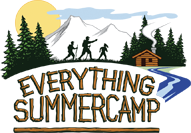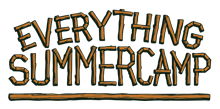Hey, Safety Kids!
Today is Fire Prevention Day. I wrote about this day on October 9 of last year, offering tips on fire safety around the house so you and your family can learn what to do to increase your chances of preventing a fire. Today’s post, on the other hand, covers the proper way to safely build, maintain, and extinguish your fires OUTSIDE of the house.
 First of all, you should only build fires in a designated fire pit that is provided for you in a state park or one that belongs to your family in your own backyard. If a camp site does not provide you with fire pits, check with the park to see if digging your own pit is allowed. Some may allow it while others do not.
First of all, you should only build fires in a designated fire pit that is provided for you in a state park or one that belongs to your family in your own backyard. If a camp site does not provide you with fire pits, check with the park to see if digging your own pit is allowed. Some may allow it while others do not.
If you can dig your own, you should do it 15 ft. away from any tents, shrubs, or trees around you and steer clear of low-hanging branches above. Pits should be about a foot deep and lined with a circle of rocks.
Now you’re ready to star t preparing your pit. Place your smallest pieces of dry wood on the bottom and lay your firewood on top of each other around the small twigs and other kindling. It’s smart as you get your fire going (and as it burns) to have a bucket of water close by as well as a shovel.
t preparing your pit. Place your smallest pieces of dry wood on the bottom and lay your firewood on top of each other around the small twigs and other kindling. It’s smart as you get your fire going (and as it burns) to have a bucket of water close by as well as a shovel.
Furthermore, keep your fire to a manageable size as you continue to add firewood. And never leave your fire unattended!
Potentially the most important part about outdoor fire safety is putting your campfires out and making sure that they STAY out! The best method is to let the wood completely burn to ash, if you can. Then you should pour lots of water on the fire until the logs stop hissing. It helps to stir the ashes and embers with a shovel in between pouring. Make sure everything has gotten wet and cold to the touch.

If you don’t have water, you can use dirt to extinguish the fire, but do not attempt to bury the fire as it will continue to smolder underground and potentially crawl back up to the surface through plant roots and cause a wildfire.
Kids should always have adult supervision when making fires inside OR outside! As Smokey the Bear says, “Only you can prevent forest fires.” As always, thanks for reading and—of course—thank you, Smokey.
- John

